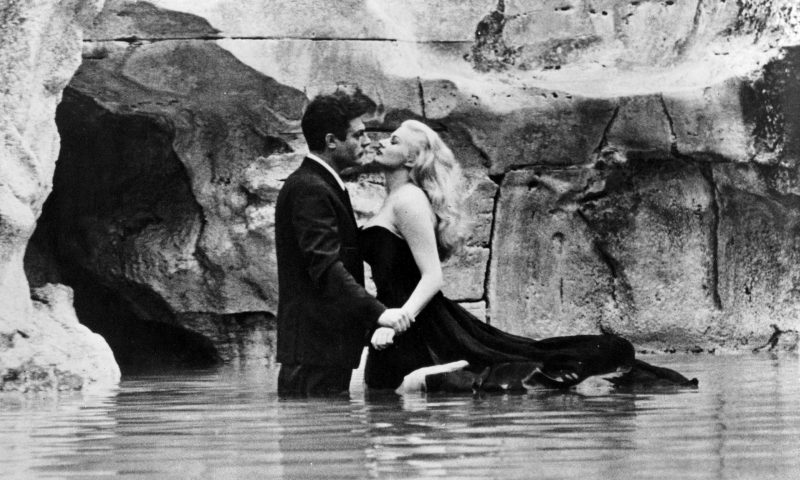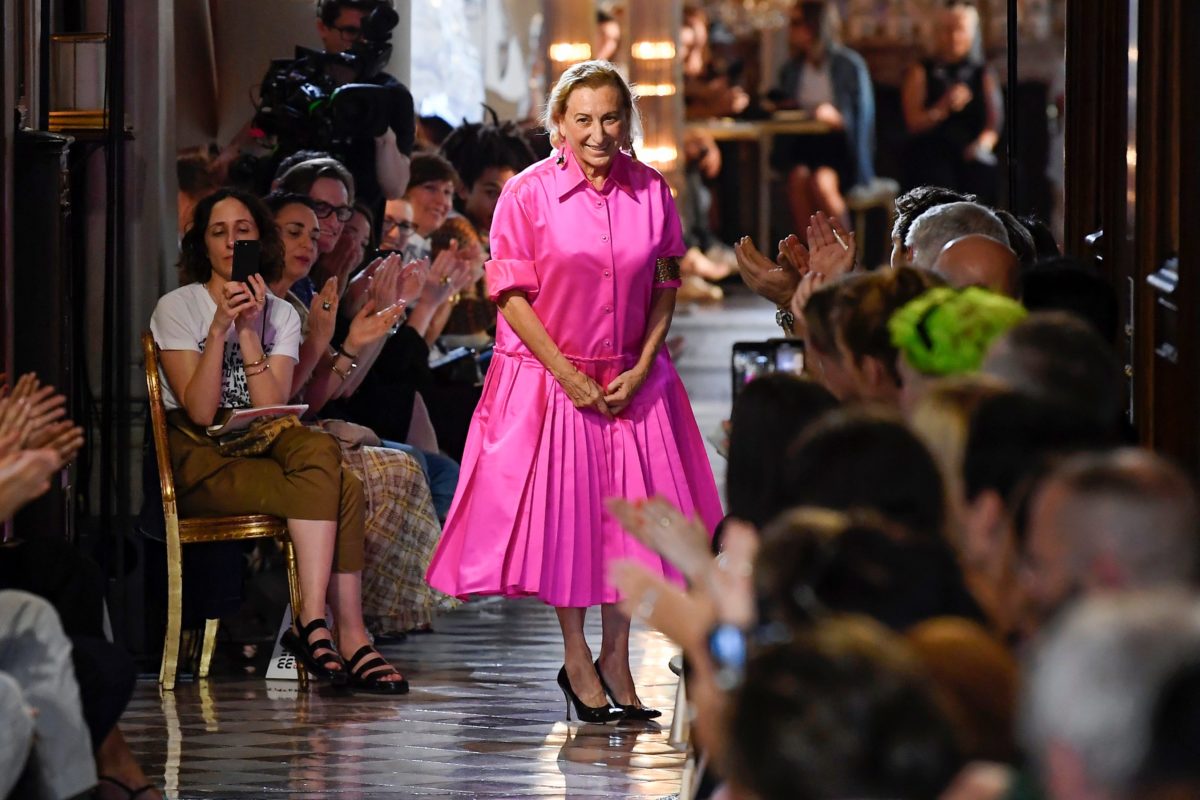In Part One of ‘The Girl’s Guides to the World of Designer Fashion’, we began tracking the global rise of Italian fashion right back from the Renaissance. The industry that has given us fame, scandal, even murder, has also mastered the arts of manufacturing desire with their use of marketing, image, design and craftsmanship.
Often called the pioneer of Italian fashion, businessman Giovanni Battista Giorgini staged Italy’s fist ever internationally recognised fashion show in 1951 at his residence in Florence. The event showed the collections of ten major fashion houses including Carosa, Fabiani, Simonetta, the Fontana sisters, Schuberth, Vanna, Noberasco, Marucelli and Veneziani. Publisher and guest at the event John Fairchild wrote at the time:
“France has Paris, but Italy has Florence. What I like about Florence fashion and I suppose all Italian fashion is that free spirit, ease of Italian chic, as smooth and beautiful as a Ferrari and as delicious as steaming pasta, Italian fashion is irresistible”.
Models walked the stage beneath shining chandeliers, draped in exquisite textiles. The carefully chosen audience was encouraged to wear specifically Italian outfits. Expertly crafted shoes stalked down the runway. Italy was finding its own footing, distinct from the French eye for style. Giorgini foresaw the economic implications of Italian craftmanship. This event seduced American buyers and launched the now multi-billion-dollar industry. The shows continued over the years, cementing Italy as an international beacon of style. Its popularity led to the first Milan Fashion Week in 1958. Milan remains one of the big four Fashion Weeks every year.
Established in 1953, Missoni was born as an innovator in the scene, associated from the beginning with modern takes on patterning, mosaics, patchworks and striking colour. Ottavio Missoni and Rosita Jelmini began the company together, each focusing on design and business management respectively. Rosita’s family history of manufacturing gave the brand a distinct advantage, and they were able to reconfigure knitting machines to create more modern styles than had been seen before. By the 1970s, the Missoni label was a recognisable status symbol. The brand is a leader in material combination, with as many as twenty different fabrics included in one garment. Stripes, scallops, dots, prints and waves embellish the Missoni collections. With their unusual colour combinations and sumptuous fabrics, they stand out as a blend of quality and uniqueness.

Photo Credit: Reuters
Valentino’s debut on the international stage was in Florence in 1962. Designer Valentino Garavani became known for its luxury high fashion and signature red dresses. The label’s exquisite designs are admired for their deluxe quality and sophistication. While unquestionably luxurious, Valentino’s collections were always grounded in reality. The fashion house achieved a signature look that is instantly recognisable, modern and sophisticated. Tradition and innovation are balanced perfectly, making the label distinctively Italian in its style.
The designs hold a vast technical precision, with contemporary takes on past decades’ drapery and silhouettes. Valentino is a brand that is wilfully exclusive. The signature Valentino red is a shade sought after as a symbol of wealth by the fashion elite and beyond.
Just like the old masters and surrealist painters, Italian fashion was greatly influenced by Italian auteur cinema, which flourished alongside Italian fashion’s rise in the ‘50s and ‘60s. Cinema and fashion were twin art forms that often borrowed from one another. Film directors Federico Fellini and Michelangelo Antonioni created a broad cultural narrative that shaped the aesthetic of Italian fashion, with lavish costumes that brought heavily stylised clothing to the fore in Europe. Fellini’s La Dolce Vita, was a tour de force in showcasing Italian glamour, making it something to be envied the world over. The film explored the complexities of the search for love and happiness. The enduring appeal of the little black dress can be traced back to this time in history, entwined within cultural narratives of aestheticism and the pursuit of pleasure.

Photo Credit: Italics Magazine
Fashion at this time held a thin veneer of respectability in the upper echelons of society, while beneath the facade sensuality and sexuality simmered, threatening to bubble up to the surface. The Italian look was redefined in the 1980s and ‘90s. What was once revered for its adherence to classic minimalist aesthetics, albeit with sensual undertones, exploded into striking, bold designs that challenged convention. In this era, many of the well-known fashion houses today flourished, setting the groundwork for the unbelievable wealth and fame that was to ensue.
Versace, Salvatore Ferragamo, Gucci, Prada and Moschino exploded as giants in the fashion world. These labels defined the look of an era.
Dolce & Gabbana had its first runway show during this period, in 1985. The label headed by Domenico Dolce and Stefano Gabbana, had a significant role in Italian read-to-wear fashion. The brand’s signature fluidity and lack of adherence to convention quickly forged a loyal following. The founders are seen as the progenitors of a distinctly Mediterranean style, inspired by the likes of screen siren Sophia Loren. The Dolce & Gabbana woman holds two identities within her: that of a brazen and bold independence and also a family and church-devoted spirituality. This duality is typical of Catholicism is Southern Italy.
In 1994, the brand released the D&G label, influenced by street-style and with a focus on the youth market. The brand is famous worldwide for its garments as well as its fragrance collection.

Photo Credit: Fashionista
The ‘80s and ‘90s were a golden era for Italian fashion. Gianni Versace was another revolutionary force in Italian fashion that triumphed over these decades. Versace made a name for itself as unapologetic and over the top, its signature colours of black and gold worn in metal, mesh and leather. Founded in Milan in 1978, the brand remains one of the leading international fashion houses.In the ‘80s and ‘90s, the label was at the forefront of trailblazing fashion. Versace is known for flashy, innovative designs that retain a measured, sleek appeal. At the label’s most successful, it courted the favour of the world’s biggest supermodels including Naomi Campbell, Christy Turlington, Helena Christensen, and Cindy Crawford.
In 1997, tragedy hit the fashion world. Gianni Versace, the “Rock n’ Roll designer”, was shot and killed near his Miami Beach mansion. Following Gianni Versace’s assassination, the brand was taken over by his siblings Donatella and Santo Versace. In the decades since, even with it’s ups and downs Versace has gone from strength to strength and remains one of the most sought-after and recognisable brands in the world.
Anna Wintour told The New York Times that Versace “was the first to realise the value of celebrity in the front row, and the value of the supermodel, and put fashion on an international media platform.”
Another brand whose name has eclipsed the clothing itself in terms of fame, is Prada. One of the most iconic brands in history, and a common shorthand for luxurious fashion, Prada has proven its staying power over its 106-year lifespan. Like Gucci, Prada began as a leather goods store. The brand’s elevation to the Official Supplier of the Italian Royal House has imbued it with an unmatched prestige.
Although Mario Prada’s patriarchal beliefs forbid female family members from working at the company, his daughter Luisa Prada became his successor and ran the business successfully for almost two decades. Today, granddaughter of Mario, Miuccia Prada has taken the label global. Known for its eccentric flair, the essence of the brand is an overturning of traditional aesthetic ideas. Prada is brash, it flouts the rules. Miuccia Prada: “Ugly is attractive, ugly is exciting. Maybe because it is newer. The investigation of ugliness is, to me, more interesting than the bourgeois idea of beauty.” The traditional Italian look is eclectic. An outfit is formed from a collection of quality, well-made items with a neutral base that forms a canvas for bold statement pieces, and this can still be seen in Italian street style.

Photo Credit: Getty Images
Emporio Armani was founded in 1975 by Giorgio Armani, and is a perfect example of Italy’s love of timeless style. Classic, timeless pieces are the bread and butter of Italian style and Armani exemplifies the Italian look. High-quality leather belts perfectly cinch trousers and show the body’s silhouette. Simple yet enduring pieces are revered worldwide for their well- made beauty.
Even a simple pair of jeans must be of the highest quality and a perfect fit. Practical items like watches, sunglasses and handbags are afforded glamour and sophistication by virtue of their brand pedigree and the value infused by the Armani name. Armani is one of the biggest names in high-end ready to wear fashion globally. The secret to its success lies in its targeting of the middle class, a group characterised by their obsession with image but lack of access to true couture collections. A common thread of clean, simple styles unchanged by the whims of fashion runs through the Armani brand. For this reason, Armani is a textbook example of Italian design.
Italians possess an immeasurable pride in their fashion. Over the past two decades, Italian fashion labels have reinvented themselves, combining the Italian love and reverence for tradition with glamorous collections that optimise modern haute couture. Italian fashion has shaped the fashion world and continues to do so. Only time will tell how the Italian look will continue to revolutionise style the world over.
It’s hard to imagine a culture that has had more of an impact on the world’s style. Italian fashion has always held dualities within its style: conservatism and progressivism, tradition and innovation. As the whims of fashion ebb and flow into the future, fresh faces on the Italian scene are sure to shake up Italy’s sartorial archives and set the world ablaze with revolutionary movements. But it is also clear that the old guard of Italian fashion will hand the reins over to new creative leaders, ensuring that their legacies will be around for generations to come.
The Girls Guides to Designer Fashion
This new 6 part series explores the seductive world of designer fashion.
Series 1. The History of Lingerie
Series 2. The Legend of the Designer Bag
Series 3. The Mystery of the High Heel
Series 4. American Fashion
Series 5. Italian Fashion
Series 6. Paris Fashion
Subscribe to FIB’s newsletter for your weekly dose of music, fashion and pop culture news!






